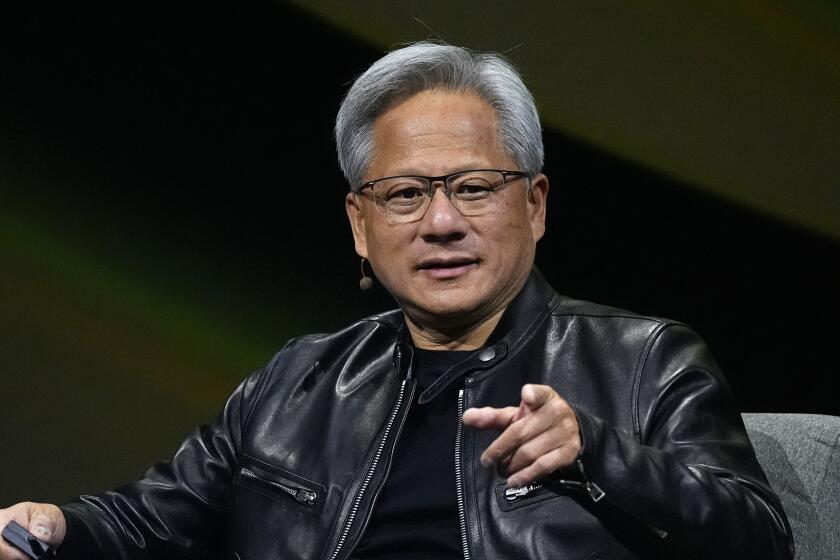Solar power proponents hopeful Trump sees benefit of growing industry

Longtime solar executive Barry Cinnamon got up Wednesday wondering what a Donald Trump administration will mean for his industry.
“I woke up this morning and walked to my car and took a picture of the sun coming up, and it did indeed come up,” said Cinnamon, president of Cinnamon Solar, one of the highest-profile solar companies in Silicon Valley.
Candidate Trump said a lot of things that heartened conventional oil and natural gas producers and worried the renewable energy business, which is growing fast but is still a tiny part of the energy landscape.
As part of his larger economic agenda, Trump has proposed lifting environmental regulations, tapping coal and nuclear power, and opening federal lands to oil and natural gas production. But despite his campaign rhetoric, experts and industry players say, Trump’s energy policies as president will bump into market realities.
The challenge Trump faces is that increasingly the economics in the energy sector favor renewable technologies such as solar and wind, which are reducing costs quickly. Increased fracking has produced natural gas at prices that are cheaper than coal. And a worldwide oil glut has reduced petroleum profits to the point where reducing regulation and opening federal lands to drilling is unlikely to bring a drilling boom.
Energy from the sun and wind have been promoted by the Obama administration through tax credits and other policy prescriptions. In California, clean energy is a primary focus of state energy policy, which includes a mandate that 50% of electricity generation come from renewable energy sources by 2030 along with goals of removing all internal combustion engine vehicles from the roads by 2050.
“The one point of encouragement that we take solace in is the fact that the market and the climate movement are aligned, which we haven’t seen before,” said Mike Brune, executive director of the Sierra Club.
Tom Kimbis, interim president of the Solar Energy Industries Assn., said he has been speaking with Trump’s representatives and “they’re very well-informed” about the pace of growth in the renewable energy sector.
Although it took 40 years to get solar panels on 1 million rooftops, Kimbis said the next 1 million will be reached in 24 months. Rooftop solar, he said, makes up 40% of the solar panels and large, utility-scale solar makes up the rest.
“I think as a businessman, President-elect Trump understands competition,” Kimbis said. “All we want in this is the ability to compete on fair terms with existing resources that are out there.”
The case for renewable energy is being made to the Trump team by unlikely allies that include solar industry companies such as Cinnamon’s, environmentalists such as the Sierra Club and the Southern Alliance for Clean Energy and members of the tea party, who helped catapult Trump into the White House.
Debbie Dooley, co-founder of the Atlanta Tea Party and national coordinator for the Tea Party Patriots, helped with a multi-partisan coalition in Florida that defeated anti-solar amendment pushed by the state’s utilities. Dooley, a Trump supporter, said she believes that once he understands the benefits of solar and that it helps increase competition, he will embrace it.
“He’s spoken about the fact the electric monopolies are a corrupting influence,” Dooley said of Trump. “I feel extremely hopeful. I think people may be surprised how much solar advances when the emphasis is energy freedom and independence.”
The dramatic changes in how the energy sector operates isn’t lost on the utility industry itself. Just as the proponents of solar and clean energy are pressing for continued growth of their preferred business, utilities are working to present their case.
“Right now, our industry is in the midst of a profound transformation,” Tom Kuhn, president of the Edison Electric Institute, said in a statement. “Given the importance of energy issues and the value that our industry provides to our nation, we want to ensure that we are communicating … about the investments our members are making and the projects they are undertaking.”
Along with the electricity sector, the oil industry also argues that it is making strides to curb pollution while helping strengthen the economy.
“We are second to no one,” said Jack Gerard, president of the American Petroleum Institute. “And we can build on this success by joining together with policies that embrace our nation’s energy renaissance including increased energy production and infrastructure development while rejecting policies that could potentially harm job creation or raise costs on American consumers and businesses.”
Analysts say no matter how friendly a Trump energy policy may be toward oil, there’s a global oversupply of crude that has kept prices for crude in domestic and international markets low. In February, for instance, a barrel of oil was $27. On Wednesday, the price of West Texas Intermediate — the benchmark price of domestic oil — was $45.26 a barrel.
Much of how the energy picture shapes up will depend on who Trump selects to lead such departments as the U.S. Environmental Protection Agency and the U.S. Department of Energy.
Over the summer, Trump floated the idea of naming oil and gas executive Harold Hamm as his choice for U.S. Energy secretary.
The founder and chief executive of Oklahoma-based Continental Resources, Hamm was one of the early adopters of horizontal drilling and hydraulic fracturing techniques that saw U.S. production skyrocket in recent years. On Wednesday, Hamm told CNBC that he favored reducing regulation and eliminating subsidies for renewable energy producers.
Bernadette del Chiaro, executive director of the California Solar Energy Industries Assn., said Trump and his advisors need to spend more time learning about the benefits of renewable energy.
“From the tea party to the extreme liberal wing of America, this is something broadly embraced by all,” Del Chiaro said. “If he’s looking to bring the country together, this is something all people can get behind.”
For more energy news, follow Ivan Penn on Twitter: @ivanlpenn
rob.nikolewsksi@sduniontribune.com
More to Read
Inside the business of entertainment
The Wide Shot brings you news, analysis and insights on everything from streaming wars to production — and what it all means for the future.
You may occasionally receive promotional content from the Los Angeles Times.











